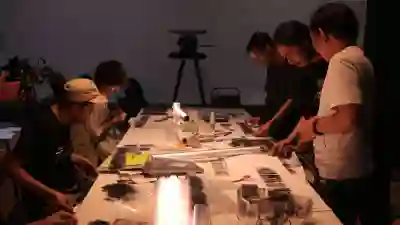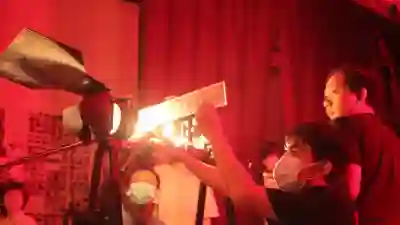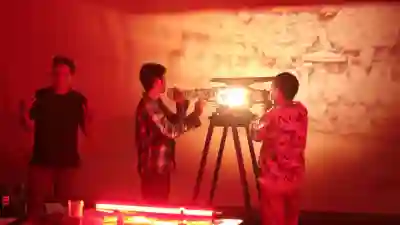Resequencing the Tillema Collection
Menyunting Arsip / Editing the Archive. Resequencing the Tillema Collection is an experimental documentary film, produced by Paoletta Holst and Paolo Patelli during a series of workshops and exhibitions over the last couple of years. Staged through workshops and exhibitions it initiates a participatory kind of archival film-making.
As part of Gudskul’s program for documenta fifteen, the collection of photographs produced and collected by Hendrik Freerk Tillema (1878-1952) during his time in the colonial Indonesia was reproduced in Jakarta, and made available to the contributors, who composed cinematic sequences by selecting, manipulating, editing and screening the materials, while providing the voice-overs. To facilitate collaborative making, we designed and built a stage set consisting of a curtain blackbox surrounded by the reproduced Collection, printed on acetate sheets and pinned on the walls. A light box served for editing the materials, and a custom made light projector for screening the sequences cinematically.
H.F. Tillema was a Dutch pharmacist, entrepreneur, self-taught ethnographer and photographer, lobbyist and advocate for hygienic standards in the colonies, who lived in Semarang, in the former Dutch East Indies, for twenty years of his life up until WWI. With several cholera epidemics in the background, he built the first purified water bottling factory in the Indies. This enterprise made him rich; it opened for him doors to exclusive industrialists’ clubs and local and national politics. Importantly, it directly supported his expeditions, observations and (self published) publications.
In 1938, Tillema bequeathed his library and archive to the Rijksmuseum voor Volkenkunde in Leiden, including roughly 11.000 black and white photographs, of which 5.000 were taken by Tillema himself. Today the majority of the prints and negatives are located in the Museum voor Volkenkunde, organised rather arbitrarily in albums without thematic or chronological consistency. Some materials are held by the Tropenmuseum, and copies of his silent films are kept in the Eye film museum.
It is possible to recognise, beneath Tillema’s technical, hygienist stance, a specific way of looking. The project asks if a mobilisation and a critical rearrangement of the collection can challenge and produce alternatives to its dominant line of argumentation and framing.


